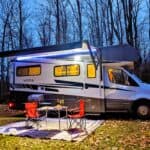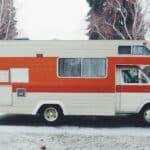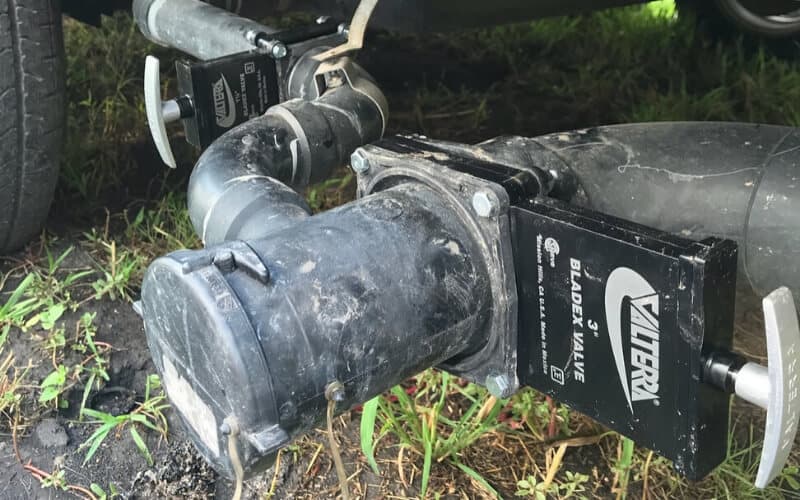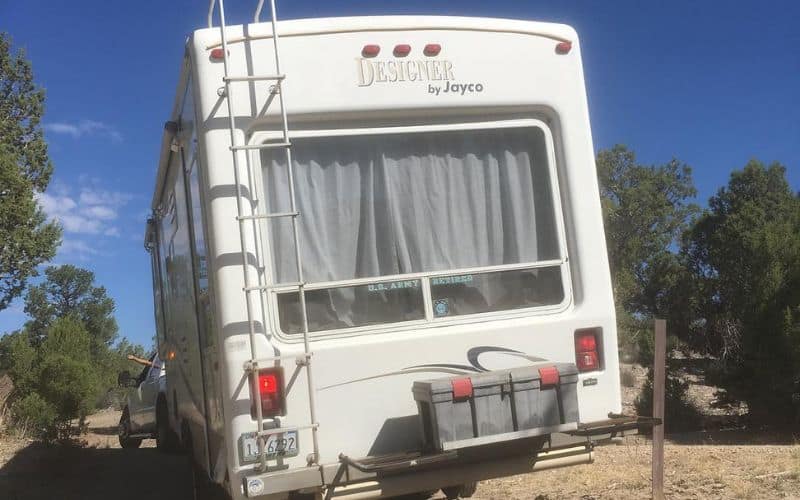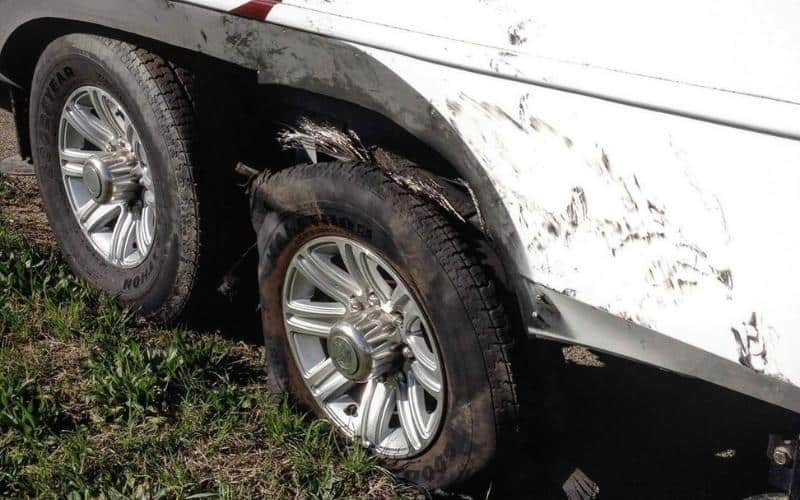If your RV has no power when not plugged in, the primary cause is usually a tripped circuit breaker, requiring you to do an emergency reset. But it can also happen if your battery is damaged or the inverter malfunctions.
No power in the RV from the battery means no electricity to the lighting, TV, or even the microwave while traveling. And since I’ve always traveled in an RV, I’ve learned that battery issues are common but are not the only ones. So, the only way to fix this problem is to carefully troubleshoot the batteries, inverter, circuit breakers, switches, and wiring.
However, examining these components of an RV not getting power from the battery can be tricky. So, let’s look more closely at why your charged RV battery isn’t generating electricity and how you can fix it.
Common Causes And Solutions Of RV Not Getting Power From Battery
RV not getting power from the battery is a nightmare, especially if you’re boondocking. So, the following are some noteworthy causes of no power to the RV, along with how to troubleshoot and find the root cause.
Damaged Battery
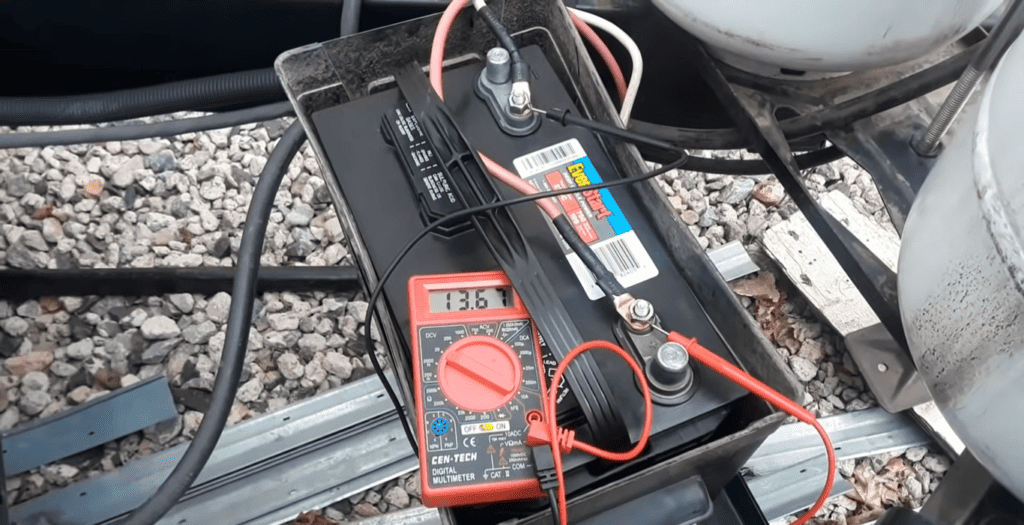
Damaged RV batteries can lead to no power generation when not plugged into the shoreline. Here are some possible damages an RV battery could have that you should look for:
- Physical damage can result from carelessness or poor storage. In this case, you may notice cracks, dents, and holes.
- If there is no physical damage, you must check the battery’s internal problems with the help of a voltmeter. A working RV battery will show you 12.5V in the voltmeter, whereas a damaged battery will display a lower or higher reading.
- Another issue includes the RV battery not being charged. Believe it or not, I’ve seen many RVers complaining about RVs not getting power from the battery when they haven’t charged it.
Unfortunately, there is usually no solution for fixing damaged batteries other than replacing them. However, remember that an RV battery typically lasts six to seven years before needing replacement.
Inverter Issues

Now, if your RV is fully charged and shows no physical or internal damage, you must inspect the inverters — often called converters.
You will have to track the wire connecting the inverter to the battery. This way, you will find the auto-breaker and see if it’s tripped. And if the auto breaker is not near the inverter, you can find it around 18 inches from the battery.
Auto breakers are constructed in two ways, which are:
- Self-resetting function, which is usually a thermal device.
- A tab that may appear if the breaker is tripped.
However, your RV inverter can still be faulty if you don’t have an auto breaker or if the breaker isn’t tripped. And for that, you will need to consult a mechanic.
Overloaded Circuit Breakers

RV circuit breakers can also cause your RV not to get power from the battery. And it usually occurs when there is an electricity overload or a flow of electricity greater than your breaker’s capacity.
For instance, if a breaker has a capacity of 20-amp and carries 30-amp electricity, it will trip. This issue occurs only when many power appliances, such as water heaters, microwaves, and TVs, are used simultaneously.
If your RV has an overloaded circuit breaker, check out the video below demonstrating how to restore your power.
Short Circuit Issue
Short-circuited breakers can also result in power outage issues, which can be caused by outdated equipment or wiring. In other words, any damage to the breakers could result in a short circuit, harming RV batteries, a microwave, or any other electronic device you may use.
In this case, the first indication is breakers emitting a mild burning scent. So, to stop the fire, your breakers will automatically trip. Regardless of whether your battery is charged, circuit breakers tripping disconnect the RV’s power to ensure safety.
To restore the electricity to your RV, you must reset the breakers if they don’t automatically reset manually. These breakers are typically found in a small metal box near the battery. However, you can also find them by consulting your RV owner’s manual. To prevent such inconvenience in the future, open the metal box, then push the reset button next to the breakers. Also, monitor your rig’s voltage while utilizing appliances by always noting how many amps each device in your RV requires. This ensures you don’t overload your breakers, leading them to tripping.
Disconnected Switch

The disconnect switch is mounted on either the positive or negative leads of the battery. While it may also cause a power outage, its function is to turn off all electricity from the battery, whether or not it is fully charged.
This switch ensures safety and lessens the chance of potential electrocution by turning off all power when transferring or replacing the battery. Plus, it also reduces the risk of damaging any breakers or appliances.
So, no power to the RV from the battery can be because you mistakenly flipped the disconnect switch. And all you need to do is to flip it back!
Tips For Boondocking
As RV not getting power from the battery is unpredictable, you can still ensure a smooth ride by regularly maintaining all electrical sources. Below are the necessary maintenance tips essential as per my experience:
| Tip | Details |
|---|---|
| Charge and maintain batteries | The life of your batteries can significantly increase with regular maintenance. So, if you regularly check and clean your batteries, you can ensure a fun trip without any electrical emergency. |
| Maintain the generator | You should also inspect the generator’s cables and batteries regularly. Furthermore, frequently check and replace the fuel, oil, and air filters. |
| Keep extra adapters | Never assume that your RV can use the shore electricity at any campsite. Therefore, bring extra adapters to ensure you can always plug in your RV on a trip. |
Takeaway
Power outages within the RV aren’t pleasant, but they might be attributed to various factors. Most of the time, no power in the RV is due to the damaged or uncharged battery.
However, you can also have no electricity in the RV due to faulty inverters and overloaded breakers. A short circuit and disconnected battery switch can also cause your RV to have no power when not plugged in. Thus, knowing how to troubleshoot your RV’s power system will let you resolve RV battery issues efficiently.
Is your RV plugged into the shoreline but still generating no power? We have a complete guide on that.
FAQs
What would cause an RV to lose power?
If your RV does not have power even after being connected to the shoreline, it can be due to the tripped converter or the external power source being off.
Why is my RV battery draining when nothing is on?
Parasitic loads will drain your RV battery even if you keep the lights and other electric appliances off.
Is it okay to leave the RV plugged in all the time?
Your RV batteries can lose electrolytes if you leave them plugged in for a long time. Unless you have a smart charger or an RV inverter with a three or four-stage charging procedure, this can reduce battery life.
How do I know if my RV battery is bad?
If your RV battery needs replacing, you may notice delayed battery charging, dim headlights, or corrosion inside the batteries. Another indication is if your battery has a foul odor or if you spot fractures and holes in it. If you notice these signs, you must replace your battery immediately.


